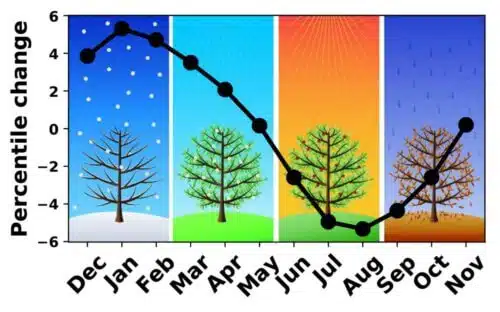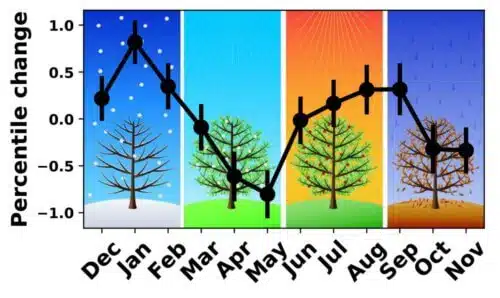Analysis of millions of Israelis' blood tests reveals hormonal fluctuations affected by the calendar

Our mood may be affected by the long nights of winter, the fall in autumn, the flowers of spring or the scorching sun of summer, but how do the changes of seasons affect the physiological processes in our bodies? From the analysis of millions of blood tests of Israelis, carried out by Weizmann Institute of Science scientists, it appears that the secretion of hormones in the body changes according to the seasons of the year and that certain hormones are secreted in peak quantities in winter and spring, while others reach their peak only in summer. the study published today In "Records of the American Academy of Sciences" (PNAS) presents a comprehensive and dynamic picture of the production of hormones in the body throughout the year - from sex and reproductive hormones to short-lived hormones, such as the stress hormone cortisol.
The team of scientists led by research students Alon Bar and Avihai Tendler from the group of Prof. Uri Alon In the Department of Molecular Biology of the Cell - in collaboration with staff scientist Dr. Neta Mendelson-Cohen from the laboratory of Prof. Loaded condition From the Department of Computer Science and Applied Mathematics - we sorted millions of blood tests of Israelis, women and men, according to the months of the year, and tracked with the help of mathematical tools 11 different hormones, including a hormone secreted by the thyroid gland, cortisol secreted by the adrenal gland, reproductive and sex hormones and growth hormone produced in the liver. The study was made possible thanks to a collaboration with Klalit Health Services, the largest health organization in Israel, which allowed the researchers access to an anonymous test database of its policyholders.
The hormones tested showed an average seasonal variation of about 5% with peak and trough points at different time points throughout the year. The researchers identified a significant difference in the peak and trough levels between two groups of hormones - the first group is produced in the pituitary gland at the base of the skull, and from there it is sent to the reproductive organs, the adrenal glands and other organs, which in turn secrete hormones that act directly on the body and influence or control bodily reactions and functions. The researchers discovered that the hormones from the first group record peak levels in the summer, while the hormones from the second group, controlled by the first group, are secreted at their peak in the winter or spring. "This is a very surprising finding. "Pituitary gland hormones guide the secretion of action hormones in a time frame of minutes to hours, so it was expected that they would reach a peak together," says Barr.
The researchers built a mathematical model that explains why each of the groups has different seasons of high tides and low tides. "Pituitary hormones", Bar explains, "affect not only the body's metabolism and functions, but also the organs that secrete the hormones themselves. For example, pituitary hormones not only stimulate the adrenal glands to produce cortisol - they cause the glands themselves to grow. The secretion of cortisol in turn causes contraction of the pituitary gland, thus ultimately reducing the amount of stimulation to the adrenal gland, which shrinks back, and God forbid." This cycle of growth and contraction was known, but the researchers were able to connect studies measuring the change in the size of the glands with the fluctuations they detected in the levels of hormones in the blood. The researchers suggest that this cycle actually constitutes a kind of biological "calendar" and estimate that the "directing hand" of this mechanism is the hormone melatonin, the secretion of which changes according to the circadian cycles of day and night.

Many animals show seasonal behavior - bird migration, hibernation, changes in the composition of wool or fur, and so on. Indeed, seasonal fluctuations in hormones are a well-known phenomenon in many animals, and the relationship between it and seasonal changes in the behavior and physiology of animals is a topic that has been the focus of research attention for years. However, seasonality in hormones in humans is a topic about which not much was known until now.
The researchers hypothesize that the findings according to which sex hormones, growth and stress reach their peak in winter-spring indicate that this is a physiological peak period in humans - in terms of metabolism, reproduction, growth and response to stress. This hypothesis is supported by the findings of previous studies showing that growth, sperm quality and quantity, immune system function and cognitive abilities reach their peak in the winter-spring period.
The scientists hypothesize that the patterns they found in the Israeli population will be reversed in the southern hemisphere, and that in areas where there are more significant differences between day and night throughout the year, the average seasonal variation of hormone secretions will be much higher. "If we saw a seasonal variation of 5% in Israel, this variation could be more than 15% in Northern Europe," says Bar.
More of the topic in Hayadan:
